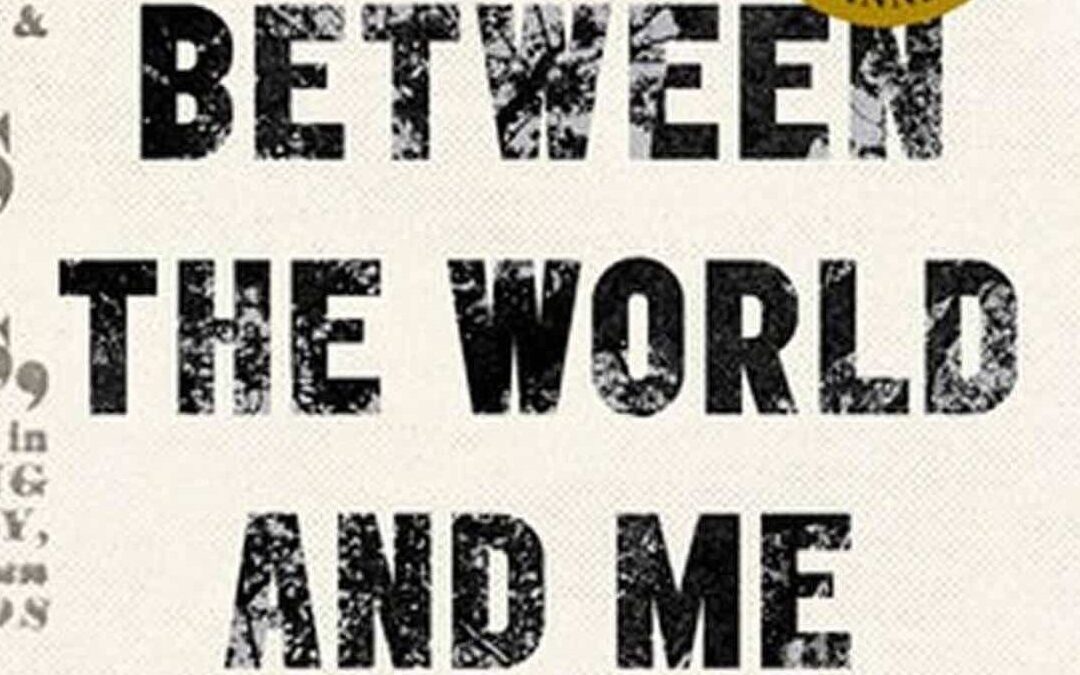This article aims to give a glimpse into the controversial book that has captured the nation’s attention after the book was removed in the middle of a lesson in a Lexington-Richland District 5 School in Chapin, South Carolina. The article then aims to address the author’s perspective. The author of this article does not hold to the same definition and perspective as Ta-Nahesis Coates about race.Media outlets such as ABC News, The Daily Beast, Daily Mail and many more have covered the story.
The removal of a book called “Between the World and Me” by journalist Ta-Nahesis Coates has captured the attention of national media. The lesson was given in February of 2023. When a group of students complained about being discriminated against in their English Language Arts class at Chapin High School, they emailed a school board member of Lexington-Richland 5. The book was taken away from the class immediately following the complaints.
The book, an open letter to Coates’ son, centers around how his son ought to think about the American Dream as a Black boy. To refer to Black America he says “the body” or “the black body” and to refer to the American Dream he says “the Dream”.
We’ve provided seventeen quotes from the book below for you to make your own judgments. (Quotes are taken from the PDF version of the book.)
“Specifically, the host wished to know why I felt that white America’s progress, or rather the progress of those Americans who believe that they are white, was built on looting and violence.” (p.6)
“. . . the elevation of the belief in being white, was not achieved through wine tastings and ice cream socials, but rather through the pillaging of life, liberty, labor, and land; through the flaying of backs; the chaining of limbs; the strangling of dissidents; the destruction of families; the rape of mothers; the sale of children; and various other acts meant, first and foremost, to deny you and me the right to secure and govern our own bodies.” (p.8)
“And you know now, if you did not before, that the police departments of your country have been endowed with the authority to destroy your body. . .The destroyers will rarely be held accountable. Mostly they will receive pensions. And destruction is merely the superlative form of a dominion whose prerogatives include friskings, detainings, beatings, and humiliations. All of this is common to black people. And all of this is old for black people. No one is held responsible. ” (p.9)
“The destroyers are merely men enforcing the whims of our country, correctly interpreting its heritage and legacy. It is hard to face this. But all our phrasing-race relations, racial chasm, racial justice, racial profiling, white privilege, even white supremacy-serves to obscure that racism is a visceral experience, that it dislodges brains, blocks airways, rips muscle, extracts organs, cracks bones, breaks teeth. You must never look away from this. You must always remember that the sociology, the history, the economics, the graphs, the charts, the regressions all land, with great violence, upon the body.” (p.10)
“But a great number of educators spoke of “personal responsibility” in a country authored and sustained by a criminal irresponsibility. The point of this language of “intention” and “personal responsibility” is broad exoneration. Mistakes were made. Bodies were broken. People were enslaved. We meant well. We tried our best. “Good intentions” is a hall pass through history, a sleeping pill that ensures the Dream.” (p.33)
“White America” is a syndicate arrayed to protect its exclusive power to dominate and control our bodies. Sometimes this power is direct (lynching), and sometimes it is insidious (redlining). But however, it appears, the power of domination and exclusion is central to the belief of being white, and without it, “white people” would cease to exist for want of reasons.” (p. 42)
“We were black, beyond the visible spectrum, beyond civilization. Our history was inferior because we were inferior, which is to say our bodies were inferior. And our inferior bodies could not possibly be accorded the same respect as those that built the West. Would it not be better, then, if our bodies were civilized, improved, and put to some legitimate Christian use?” (p. 44)
“But you are a black boy, and you must be responsible for your body in a way that other boys cannot know. Indeed, you must be responsible for the worst actions of other black bodies, which, somehow, will always be assigned to you. And you must be responsible for the bodies of the powerful-the policeman who cracks you with a nightstick will quickly find his excuse in your furtive movements.” (p.71)
“You are all we have, and you come to us endangered. I think we would like to kill you ourselves before seeing you killed by the streets that America made. That is a philosophy of the disembodied, of a people who control nothing, who can protect nothing, who are made to fear not just the criminals among them but the police who lord over them with all the moral authority of a protection racket.” (p.82)
“But my experience in this world has been that the people who believe themselves to be white are obsessed with the politics of personal exoneration.” (p.97)
Describing what it means to remember slavery Coates writes, “It could only be the employment of carriage whips, tongs, iron pokers, handsaws, stones, paperweights, or whatever might be handy to break the black body, the black family, the black community, that black nation. The bodies were pulverized into stock and marked with insurance.” (p.104)
“To acknowledge these horrors means turning away from the brightly rendered version of your country as it has always declared itself and turning toward something murkier and unknown. It is still too difficult for most Americans to do this. But that is your work. It must be, if only to preserve the sanctity of your mind. The entire narrative of this country argues against the truth of who you are.” (pp 98-99)
“Here is what I would like for you to know: In America, it is traditional to destroy the black body—it is heritage.” (p.103)
“‘The two great divisions of society are not the rich and poor, but white and black,’ said the great South Carolina senator John C. Calhoun. ‘And all the former, the poor as well as the rich, belong to the upper class, and are respected and treated as equals.’ And there it is-the right to break the black body as the meaning of their sacred equality. And that right has always given them meaning, has always meant that there was someone down in the valley because a mountain is not a mountain if there is nothing below. You and I, my son, are that ‘below’. That was true in 1776. It is true today.” (p. 104-105)
“You see this from time to time when some dullard-usually believing himself to be white—proposes that the way forward is a grand orgy of black and white, ending only when we are all beige and thus the same “race”. (p.115)
“I am convinced that the Dreamers, at least the Dreamers of today, would rather live white than live free. In the Dream they are Buck Rogers, Prince Aragorn, and entire race of Skywalkers. To awaken them is to reveal that they are an empire of humans and, like all empires of humans, are built on the destruction of the [black] body.” (p. 143)
“Perhaps that was, is, the hope of the movement: to awaken the Dreamers, to rouse them to the facts of what their need to be white, to talk like they are white, and to think that they are white, which is to think that they are beyond the design flaws of humanity, has done to the world.” (p. 148)
In summary of Coates’ book, I make the following observations:
Coates believes that white America’s progress happened by violence, not progress of human rights. He thinks that white people wanting to be better than others has caused a lot of harm. They gained power by hurting black people through slavery and hurting their families. Sometimes, the police, who are supposed to protect everyone, hurt or even kill black people and get rewarded for it.
Coates wants his son to know that there are people who care about him and want to keep him safe. But there are also people who would rather hurt him than see him succeed. Coates writes about how some white people try to avoid feeling guilty about what their ancestors did to black people and how its hard for many Americans to face the truth about the past. Coates emphasizes how its important to know the real story, not a made-up one with imaginative heroes.
Coates doesn’t like the idea of blending races together to solve racism. He believes that the Dreamers, who are the people holding onto the American Dream, would rather keep being white than fight for true equality. He thinks their desire to be white has caused a lot of harm.
Coates ends the book by saying that the hope of the movement is to wake up the Dreamers. He wants them to understand the consequences of thinking they’re better just because they’re white.
The types of environments that teach these kinds of emotional and unfortunate messages are chilling. This book may present an artful perspective, but it lacks deep analytical thinking apart from exaggerated expressions that illustrate author’s hate for white people.
If you were in a high school English class, how would you feel with the following take-aways from the book?
- White America’s progress was built on looting and violence.(p.6)
- “White America” is a syndicate protecting its power to dominate and control black bodies.(p. 127)
- Domination and exclusion are central to the belief in being white.(p. 42)
- The way white Americans regard black people is sexual and obscene. (p. 127)
- The movement hopes to awaken white Americans to the impact of their belief in superiority on the world. (p. 146)
In presenting these quotes and summary, I aim to provide the repeated themes in Coates’ book about white people and America. I ask the reader to consider: Is a work intended to awaken fear and resentment toward authority figures necessary and/or beneficial to develop good reasoning skills? This book was in an assignment, coupled with a short video about systemic racism and another in support of affirmative action, which is now determined to be unconstitutional by the United States Supreme Court. I have yet to hear what alternative views were presented in the assignment by an equally famous author of color who took a positive view of American values. Not once did I hear an alternative perspective being presented in this lesson at the school board meeting on Monday, July 17. Yet, the meeting preached that alternative views are always the goal of the school district’s policy.
Students should not be made to feel like targets of hate or jealousy. Instead, students need teachers who genuinely believe in their potential to succeed and instill righteous aspirations that stretch their capabilities. Students need teachers that allow them to grow and surpass themselves in wisdom. Do students need to be challenged and convicted for not being accurate or precise at times? Yes, but their sense of self-worth and moral authority should not be diminished or chilled by their teachers.
At the board meeting on Monday July 17, much talk surrounded non-partisan academic policies, such as wanting students to become independent and critical thinkers. Let me kindly ask: What does this book have to do with improving reasoning skills? I’m wondering how this book cultivates any learning, other than compulsory acquiescence for fear of being called a white “dullard”. This book is teaching people to be angry and suspicious of white people or being guilty for being white. This book teaches people to be cynical about established authorities as if it’s upholding systemic racism. This book treats systemic racism with a religious reverence and to worship a focus on race, not cultivating analytical reasoning skills.
Is the teacher’s goal to build comradery and unity making certain students feel “ashamed to be Caucasian“? With regards to teaching critical thinking skills, this book is useless because dissent from the author’s opinions is labeled with cognitive dissidence. It defies constructive debate. It needs to be thrown out as well as any other book that uses racial overtones to make students appear racist or white dullards if they disagree with the author’s position. Much talk at the board meeting appealed to policy reaching middle ground, but their meaning of critical thinking seems to be teaching students how to give authorities the middle finger.
The citizens of South Carolina are at a defining moment in history and the nation is watching. Our children do not deserve this. They deserve better, but based on the last board meeting, they are going to get more of it instead. Near the end of the board meeting on July 17th, the Superintendent of Lexington-Richland 5 School District, Akil Ross promised to the community to train teachers on how to teach books like “Between the World and Me”. Will the people of the Lexington-Richland 5 School District accept this discrimination to be taught?
The people of Chapin ought to stop soft bigoted books like this from being utili, on their dime, for the sake of their children and for the sake of America’s future.
Adam Mahdavi is a teacher at The South Carolina Preparatory Academy. Adam worked with the South Carolina Freedom Caucus to remove discriminatory curriculum in the Lexington One school District for 31 schools, protecting over 28,000 students. He just recently worked with Fox News Digital to expose the subversive teacher education program at the University of South Carolina’s College of Education. He earned his Bachelor of Arts degree from the University of South Carolina’s School of Education. He currently lives in the Midlands area with his wife and daughter.
If you want to continue to see independent news, thought and reports please “like”, comment, share with a friend, and donate to support The Standard on this page to assure the continued availability of news that is ignored too often by the dominant media.




 RSS - Posts
RSS - Posts